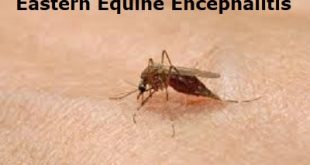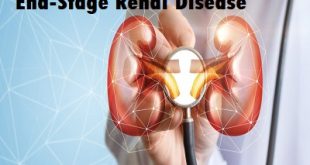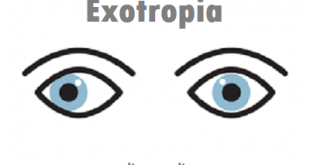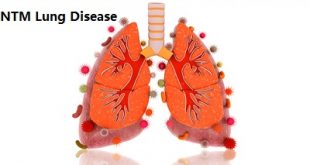What is emphysema?
Emphysema is a lung condition that causes shortness of breath. In people with this condition, the air sacs in the lungs (alveoli) are damaged. Over time, the inner walls of the air sacs weaken and rupture — creating larger air spaces instead of many small ones. This reduces the surface area of the lungs and, in turn, the amount of oxygen that reaches your bloodstream.
When you exhale, the damaged alveoli don’t work properly and old air becomes trapped, leaving no room for fresh, oxygen-rich air to enter. Most people with emphysema also have chronic bronchitis. Chronic bronchitis is inflammation of the tubes that carry air to your lungs (bronchial tubes), which leads to a persistent cough. Emphysema and chronic bronchitis are two conditions that make up chronic obstructive pulmonary disease (COPD). Smoking is the leading cause of COPD. Treatment may slow the progression of COPD, but it can’t reverse the damage.
Types of Emphysema
Emphysema is a type of COPD, and there are different types of emphysema, depending on which part of the lungs it affects.
These are:
- paraseptal emphysema
- centrilobular emphysema, which affects mainly the upper lobes and is most common in people who smoke
- panlobular emphysema, which affects both the paraseptal and centrilobular areas of the lungs
During diagnosis, a CT scan can show which type of emphysema is present. The type does not affect the outlook and treatment.
Pathophysiology
Emphysema is a pathologic diagnosis defined by permanent enlargement of airspaces distal to the terminal bronchioles. This leads to a dramatic decline in the alveolar surface area available for gas exchange. Furthermore, loss of alveoli leads to airflow limitation by 2 mechanisms. First, loss of the alveolar walls results in a decrease in elastic recoil, which leads to airflow limitation. Second, loss of the alveolar supporting structure leads to airway narrowing, which further limits airflow.
It has 3 morphologic patterns:
- Centriacinar
- Panacinar
- Distal acinar, or paraseptal
Centriacinar emphysema is characterized by focal destruction limited to the respiratory bronchioles and the central portions of the acini. This form of emphysema is associated with cigarette smoking and is typically most severe in the upper lobes.
Panacinar emphysema involves the entire alveolus distal to the terminal bronchiole. The panacinar type is typically most severe in the lower lung zones and generally develops in patients with homozygous alpha1-antitrypsin (AAT) deficiency.
Distal acinar emphysema, or paraseptal emphysema, is the least common form and involves distal airway structures, alveolar ducts, and sacs. This form of emphysema is localized to fibrous septa or to the pleura and leads to formation of bullae (as seen in the images below). The apical bullae may cause pneumothorax. Paraseptal emphysema is not associated with airflow obstruction.
The gradual destruction of alveolar septae (shown in the image below) and of the pulmonary capillary bed in emphysema leads to a decreased ability to oxygenate blood. The body compensates with lowered cardiac output and hyperventilation. This V/Q mismatch results in relatively limited blood flow through a fairly well oxygenated lung with normal blood gases and pressures in the lung, in contrast to the situation in chronic bronchitis. Because of low cardiac output, the rest of the body also suffers from tissue hypoxia and pulmonary cachexia. Eventually, these patients develop muscle wasting and weight loss and are identified as “pink puffers.”
Causes
- The main cause is exposure to airborne irritants, which include tobacco smoke, marijuana smoke, air pollutants, and manufacturing smoke.
- Very rarely, emphysema is caused by heredity, wherein a person has a shortage of a protein that guards the elastic structure in the lungs, known as alpha-1 antitrypsin deficiency.
- Close relatives of people with emphysema are more likely to develop the disease themselves. This is probably because the tissue sensitivity or response to smoke and other irritants may be inherited. The role of genetics in the development of emphysema, however, remains unclear.
- Abnormal airway reactivity, such as bronchial asthma, has been shown to be a risk factor for the development of emphysema.
Who is at risk for emphysema?
The risk factors include
- This the main risk factor. Up to 75 percent of people who have emphysema smoke or used to smoke.
- Long-term exposure to other lung irritants, such as secondhand smoke, air pollution, and chemical fumes and dusts from the environment or workplace.
- Most people who have emphysema are at least 40 years old when their symptoms begin.
- This includes alpha-1 antitrypsin deficiency, which is a genetic condition. Also, smokers who get emphysema are more likely to get it if they have a family history of COPD.
Symptoms of emphysema
The symptoms include:
- Breathlessness with exertion, and eventually breathlessness most of the time in advanced disease
- Susceptibility to chest infections
- Cough with phlegm production
- Fatigue
- Barrel-shaped chest (from expansion of the ribcage in order to accommodate enlarged lungs)
- Cyanosis (a blue tinge to the skin) due to lack of oxygen.
Complications of Emphysema
People who have emphysema are also more likely to develop:
Collapsed lung (pneumothorax). A collapsed lung can be life-threatening in people who have severe emphysema, because the function of their lungs is already so compromised. This is uncommon but serious when it occurs.
Heart problems. Emphysema can increase the pressure in the arteries that connect the heart and lungs. This can cause a condition called cor pulmonale, in which a section of the heart expands and weakens.
Large holes in the lungs (bullae). Some people with emphysema develop empty spaces in the lungs called bullae. They can be as large as half the lung. In addition to reducing the amount of space available for the lung to expand, giant bullae can increase your risk of pneumothorax.
How do doctors diagnose Emphysema?
Your chest feels tight, you’re out of breath much of the time, and you have a cough that won’t go away. Do you have emphysema? You can’t go on symptoms alone. See your doctor. They’ll do the following tests to find out for sure:
Medical History
Your doctor will talk to you about your health and any recent changes you might have noticed. If you have emphysema, you’ll probably have had shortness of breath, often over a period of months or years. You may also experience wheezing. You might have a cough that won’t go away, too.
Physical Exam
Your doctor will check your weight and blood pressure. They’ll listen to your heartbeat and keep an eye out for anything that seems strange or unusual.
If you have advanced emphysema, your doctor may notice that you have any of the following:
- You have a “barrel chest” caused by larger-than-normal lungs.
- You’re wheezing, having a hard time getting air out of your lungs.
- Your fingertips are rounded. Doctors call this “clubbing.”
- You purse your lips when you breathe, like you’re blowing a kiss.
- The oxygen levels in your blood are low (hypoxemia).
- The carbon dioxide levels in your blood are high (hypercarbia), because emphysema makes it hard to exhale properly.
- Your lips have a blue tinge (cyanosis), another sign of low oxygen in your blood.
- Malnutrition causes muscles to slowly waste away in advanced emphysema.
Pulmonary Function Tests (PFTs)
For this exam, you may sit inside an enclosed booth and breathe into a tube. This will allow your doctor to measure:
- How much air your lungs can hold
- How fast you can blow air out of your lungs
- How much air stays trapped in your lungs after you exhale
- Whether you’re able to breathe better after using medicines you inhale, such as albuterol
If you have normal lungs, you’ll likely be able to empty most of the air from them in 1 second. If you have emphysema, it’ll probably take longer.
Chest X-ray and CT scan
If you have advanced emphysema, your lungs will appear to be much larger than they should be. In early stages of the disease, your chest X-ray may look normal. Your doctor can’t diagnose emphysema with an X-ray alone.
A CT scan of your chest will show if the air sacs (alveoli) in your lungs have been destroyed. These make it hard for you to breathe out like normal.
Arterial blood gas
This test measures the amount of oxygen and carbon dioxide in blood from an artery. It is a test often used as emphysema worsens. It is especially helpful in determining if a patient needs extra oxygen.
Pulse oximetry
This test is also known as an oxygen saturation test. Pulse oximetry is used to measure the oxygen content of the blood. This is done by attaching the monitor to a person’s finger, forehead, or earlobe.
Electrocardiogram (ECG)
ECGs check heart function and are used to rule out heart disease as a cause of shortness of breath.
How is emphysema treated?
There is no cure for emphysema. Treatment aims to reduce symptoms and slow the progression of the disease with medications, therapies, or surgeries.
If you are a smoker, the first step in treating this condition is to quit smoking, either with medications or cold turkey.
Medications
Bronchodilator Medications
Inhaled as aerosol sprays or taken orally, bronchodilator medications may help to relieve symptoms of emphysema by relaxing and opening the air passages in the lungs.
Steroids
Inhaled as an aerosol spray, steroids can help relieve symptoms of emphysema associated with asthma and bronchitis. Over time, however, inhaled steroids can cause side effects, such as weakened bones, high blood pressure, diabetes and cataracts. It is important to discuss these side effects with your doctor before using steroids.
Antibiotics
Antibiotics may be used to help fight respiratory infections common in people with emphysema, such as acute bronchitis, pneumonia and the flu.
Vaccines
Patients with emphysema should receive a flu shot annually and pneumonia shot every five to seven years to prevent infections.
Oxygen Therapy
As a patient’s disease progresses, they may find it increasingly difficult to breathe on their own and may require supplemental oxygen. Oxygen comes in various forms and may be delivered with different devices, including those you can use at home.
Surgery or Lung Transplant
Lung transplantation may be an option for some patients with emphysema. For others, lung volume reduction surgery, during which small wedges of damaged lung tissue are removed, may be recommended.
Protein Therapy
Patients with emphysema caused by an alpha-1 antitrypsin (AAT) deficiency may be given infusions of AAT to help slow the progression of lung damage.
Pulmonary Rehabilitation
An important part of emphysema treatment is pulmonary rehabilitation, which includes education, nutrition counseling, learning special breathing techniques, help with quitting smoking and starting an exercise regimen. Because people with it are often physically limited, they may avoid any kind of physical activity. However, regular physical activity can actually improve a patient’s health and wellbeing.
Lifestyle changes
- Quitting smoking if you are a smoker. This is the most important step you can take to treat this condition.
- Avoiding secondhand smoke and places where you might breathe in other lung irritants
- Ask your health care provider for an eating plan that will meet your nutritional needs. Also ask about how much physical activity you can do. Physical activity can strengthen the muscles that help you breathe and improve your overall wellness.
Prevention of Emphysema
To prevent emphysema:
- If you smoke, talk to your doctor about how to quit
- Avoid exposure to secondhand smoke
- Avoid exposure to air pollution or irritants
- Wear protective gear if you are around irritants or toxins on the job
 Diseases Treatments Dictionary This is complete solution to read all diseases treatments Which covers Prevention, Causes, Symptoms, Medical Terms, Drugs, Prescription, Natural Remedies with cures and Treatments. Most of the common diseases were listed in names, split with categories.
Diseases Treatments Dictionary This is complete solution to read all diseases treatments Which covers Prevention, Causes, Symptoms, Medical Terms, Drugs, Prescription, Natural Remedies with cures and Treatments. Most of the common diseases were listed in names, split with categories.







